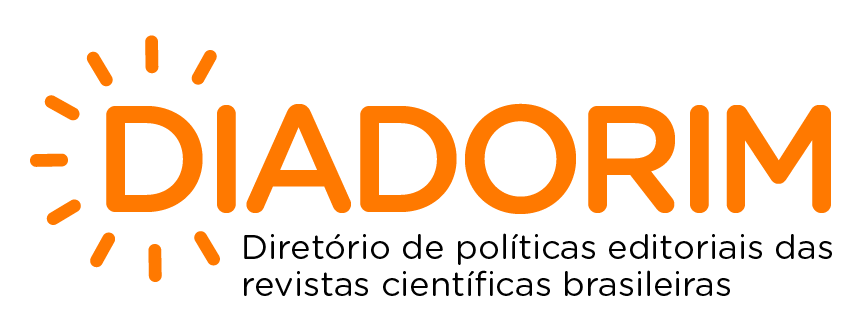Evolução humana e o impacto do estilo de vida moderno na saúde
DOI:
https://doi.org/10.52521/nutrivisa.v12i1.15020Palavras-chave:
humanos, atividade física, Saúde, estilo de vidaResumo
O texto trata de um assunto - "Ponto de Vista" desenvolvido pelo autor. Conclui que é essencial determinar o nível adequado de atividade física que mantém a boa capacidade funcional e combate a obesidade em seres humanos, sem acelerar a produção de espécies reativas de oxigênio e o envelhecimento fisiológico. Além disso, frisa que é necessário investigar mais profundamente e entender melhor as consequências fisiológicas do consumo de oxigênio e seu impacto no organismo. Quanto é o quantum ideal de movimento a ser realizados por crianças, adultos, velhos, homens, mulheres, subnutridos, obesos, pessoas com diferentes tipos de enfermidades entre outros? Como se comporta a defesa orgânica antioxidante nestes indivíduos? A ciência do esporte e a medicina esportiva ainda têm muito a avançar para responder sobre a quantidade ideal de movimento para cada indivíduo em diferentes fases da vida e com comportamento metabólicos distintos.
Referências
ALT, K.W.; AL-AHMAD, A.; WOELBER, J.P. Nutrition and Health in Human Evolution–Past to Present. Nutrients, v. 14, n. 17, p. 3594, 2022. Disponível em: https://www.mdpi.com/2072-6643/14/17/3594.
BISWAS, A.; OH, P.I.; FAULKNER, G.E.; BAJAJ, R.R.; SILVER, M.A.; MITCHELL, M.S.; ALTER, D.A. Sedentary Time and Its Association With Risk for Disease Incidence, Mortality, and Hospitalization in Adults: A Systematic Review and Meta-analysis. Annals of Internal Medicine, v. 162, n. 2, p. 123-132, 2015. Disponível em: https://europepmc.org/article/MED/25599350.
CHAMBERLAIN, A. Archaeological Demography. Human Biology, v. 81, n. 3, p. 275-286, 2009. DOI: 10.3378/027.081.0309. Disponível em: http://www.bioone.org/doi/full/10.3378/027.081.0309.
ESCALA, A. Universal relation for life-span energy consumption in living organisms: Insights for the origin of aging. Scientific Reports, v. 12, n. 1, p. 2407, 2022. Disponível em: https://pubmed.ncbi.nlm.nih.gov/35190571/.
HUTSON, J.M.; VILLALUENGA, A.; GARCÍA-MORENO, A.; TURNER, E.; GAUDZINSKI-WINDHEUSER, S. Persistent predators: Zooarchaeological evidence for specialized horse hunting at Schöningen 13II-4. Journal of Human Evolution, v. 196, p. 103590, 2024. Disponível em: https://www.sciencedirect.com/science/article/pii/S0047248424000988.
KRINGELBACH, M. L. The pleasure of food: underlying brain mechanisms of eating and other pleasures. Flavour, v. 4, n. 20, 2015. Disponível em: https://flavourjournal.biomedcentral.com/articles/10.1186/s13411-014-0029-2.
MEIJER, H. The Origins of War: A Global Archaeological Review. Human Nature, v. 35, n. 3, p. 225–288, set. 2024. Disponível em: https://pubmed.ncbi.nlm.nih.gov/39638956/.
MILITELLO, R.; LUTI, S.; GAMBERI, T.; PELLEGRINO, A.; MODESTI, A.; MODESTI, P. A. Physical Activity and Oxidative Stress in Aging. Antioxidants, v. 13, n. 557, p. 1-15, 2023. Disponível em: https://www.mdpi.com/2076-3921/13/5/557.
MURADIAN, K. "Pull and push back" concepts of longevity and life span extension. Biogerontology, v. 14, n. 6, p. 687-691, dez. 2013. DOI: 10.1007/s10522-013-9472-1. Disponível em: https://pubmed.ncbi.nlm.nih.gov/24114506/.
NAHAS, M.V.; GARCIA, L. M.T. The relationship between physical activity and mortality: A systematic review and meta-analysis. Revista Brasileira de Educação Física e Esporte, v. 24, n. 1, p. 135-148, 2010. Disponível em: https://doi.org/10.1590/S1807-55092010000100012.
POWER, M..L.; SCHULKIN, J. Sex differences in fat storage, fat metabolism, and the health risks from obesity: possible evolutionary origins. British Journal of Nutrition, v. 99, p. 931–940, 2008. Disponível em: https://doi.org/10.1017/S0007114507853347.
RESSTEL, C. C. F. P. Fenômeno migratório. In: Desamparo psíquico nos filhos de dekasseguis no retorno ao Brasil [online]. São Paulo: Editora UNESP; São Paulo: Cultura Acadêmica, 2015. p. 35-52. ISBN 978-85-7983-674-9.
ROZIN, P.; GOHAR, D. The pleasures and memory of food and meals. In: PREEDY, V. R.; WATSON, R. R.; MARTIN, C. R. (Ed.). Handbook of behavior, food and nutrition. New York: Springer, 2011. p. 1445–1457. Disponível em: https://link.springer.com/chapter/10.1007/978-0-387-92271-3_44.
SELLAYAH, D.; CAGAMPANG, F. R.; COX, R. On the evolutionary origins of obesity: a new hypothesis. Endocrinology, v. 155, n.5, p. 1573-88, 2014. Disponível em: https://doi.org/10.1210/en.2013-2103.
SPEAKMAN, J. R. Evolution of obesity. In: Metabolic Syndrome. [S.l.]: Springer, 2015. p. 1–23. Disponível em: https://link.springer.com/referenceworkentry/10.1007/978-3-319-12125-3_9-1.
Downloads
Publicado
Como Citar
Edição
Seção
Licença
Copyright (c) 2025 Adriano Cesar Carneiro Loureiro

Este trabalho está licenciado sob uma licença Creative Commons Attribution 4.0 International License.














